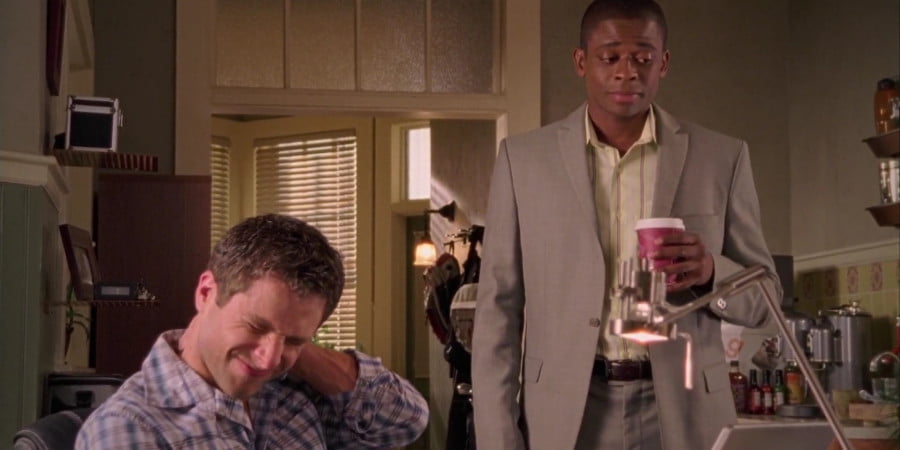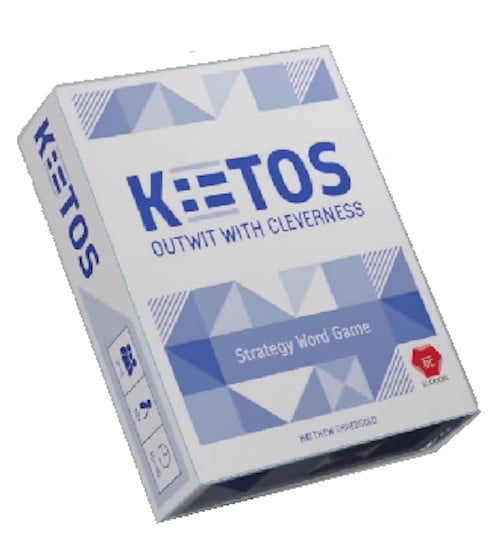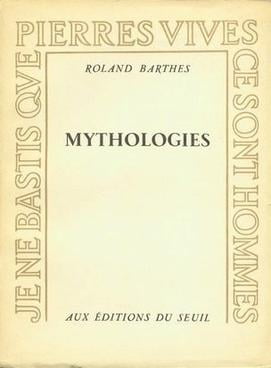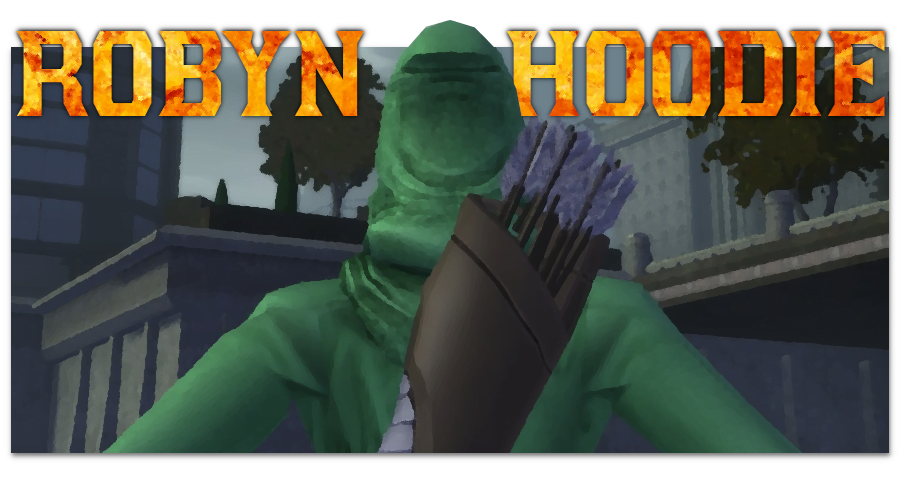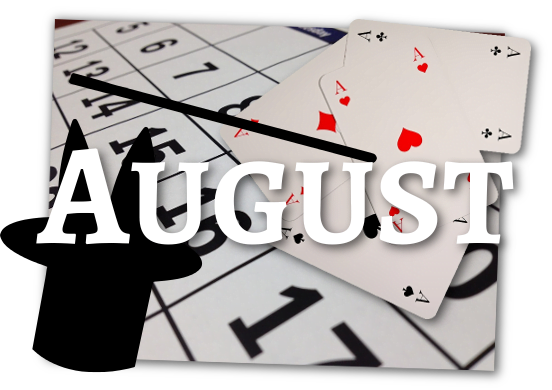August 2022 Wrapup
Tricks month has passed and with it, we will now begin an entirely serious discourse on things. There is no more room for tricky stories or funny jokes or wicked japes on this blog now, it is 100% Super Serious Time.

Prototype 22.08 — Switch Stances
Every month of 2022, I am trying, as part of both my PhD project and my all-purpose general game development, develop if not a whole game for game development, a project start, such that I can make playtest prototypes. This is a sort of report of the process throughout the month.
This month I got to the outline stage of designing a trick-taking game which is now firmly at the ‘make a prototype and see how it plays in person.’ And it’s about skateboarders, and I have a challenge now about aesthetic choices.
Continue Reading →Story Pile: Oddtaxi
I have a concern about what I can only describe as ‘That Guy’ Media. I don’t have a precise list, but there are some kinds of media that slot into a particular space where someone, usually a white millenial guy, will exhort you that oh man you gotta check this out. And then they’ll hesitate almost performatively, like we I mean they’ve practiced this in the bathroom thinking about how we’re going to explain it to a stranger or a friend or some other captive audience, and it’ll be something like ‘… I can’t tell you much without spoilers,’ that eventually degenerates into ‘look, Just Watch It’ or something like that.
When I talked about Knives Out, in an effort to give a view on the movie that was interesting if you hadn’t seen it and interesting if you had, I did so thinking about something that was missed in the swirl of commentary about this movie. These articles aren’t being written for no reason, they’re written because I want to talk to you about something, and I want to talk about it in the context of something that I’ve watched or read or listened to. It’s when I engage with something and words about it want to get out of me.
And Oddtaxi is boy howdy the kind of series that makes me full of words. A frustratingly large number of them are “Have you watched Oddtaxi? Oh, okay.”
But talking about Oddtaxi runs the risk, at least in my mind, of making it into That Guy Media. It’s not even as pure as the Gay Effusing you get when an anime has two hot girls who like each other where a commentator just foams “It’s good. It’s good. It’s good. You should watch it. It’s so good.” for ten minutes. It’s the smug cousin of that, which lacks the purity of “Oh My God I’m Finally Seeing Media I Like,” and is instead the same voice that asks “Oh, Have you seen the Raid?” or “Do you know the twist in Fight Club?“
If you’re just here for an as-brief-as-possible, why-should-I-watch-this summary, I’m going to say that I like Oddtaxi, an anime I watched in its entirety in one day and which reminds me of Durarara!! and Paranoia Agent, but less bleak or apocalyptic. Lots of competing narratives, clear use of imagery, clearly neurodivergent protagonist, great music.
Okay, so what am I going to talk about beyond the fold?
What could I talk about, if I’m not going to effuse about the text, about its ideas, or its concepts?
Continue Reading →T-Shirt: MTG Tricks
I’ve been working on this on and off for a while now. Basically, I conceived of iconography to represent a bunch of Magic: The Gathering two-card combos as simple, icons that represent a pleasant to look at image that also had that secondary meaning.
And here’s what I got so far:
First up, Painter Grindstone. Available here.
Second up, Channel Fireball, available here.
And finally, Vault-key, available here.
How To Be: Bridget (in 4e D&D)
In How To Be we’re going to look at a variety of characters from Not D&D and conceptualise how you might go about making a version of that character in the form of D&D that matters on this blog, D&D 4th Edition. Our guidelines are as follows:
- This is going to be a brief rundown of ways to make a character that ‘feels’ like the source character
- This isn’t meant to be comprehensive or authoritative but as a creative exercise
- While not every character can work immediately out of the box, the aim is to make sure they have a character ‘feel’ as soon as possible
- The character has to have the ‘feeling’ of the character by at least midway through Heroic
When building characters in 4th Edition it’s worth remembering that there are a lot of different ways to do the same basic thing. This isn’t going to be comprehensive, or even particularly fleshed out, and instead give you some places to start when you want to make something.
Another thing to remember is that 4e characters tend to be more about collected interactions of groups of things – it’s not that you get a build with specific rules about what you have to take, and when, and why, like you’re lockpicking your way through a design in the hopes of getting an overlap eventually. Character building is about packages, not programs, and we’ll talk about some packages and reference them going forwards.
You don’t have long on this earth. THE FASTEST SINNER WILL EDIT THE TEXT. MISSION ONE. WHATABURGER! A MIDNIGHT MEAL WITH THE DEVIL
THE CARBUNCLE ATE ITSELF! FIRST HOWDY!
LET’S GET THE MONEY. GODS PLAY DICE WITH THE UNIVERSE, WHY DON’T YOU GIVE HER A CALL. FIRST SHOWDOWN ATTACK, Crank it To 11! WORLD IS A FUCK
Round the first: Grind!
It’s Labor Day.
Let’s talk about Guilty Gear.
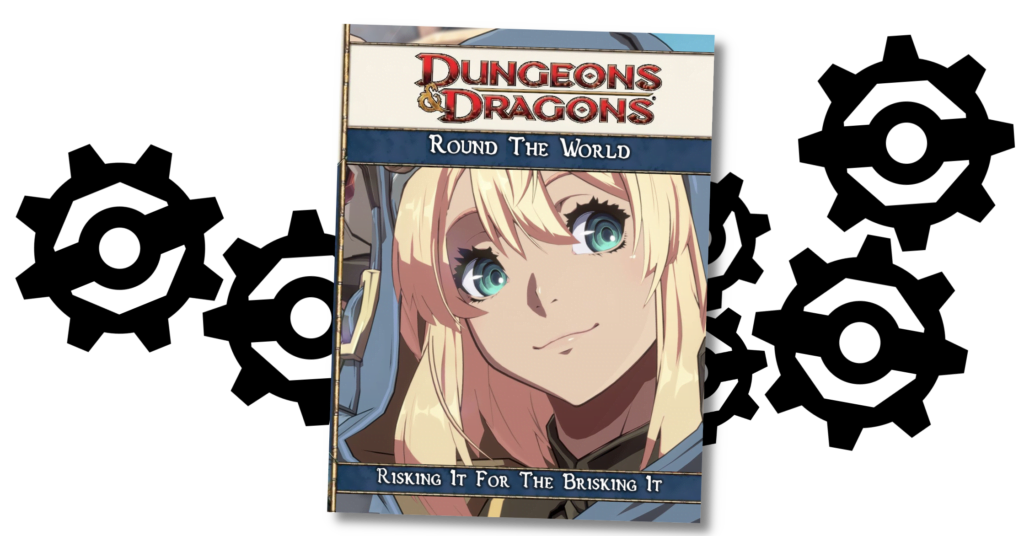
Content Warning: I’m going to have to put some disclaimers up for some political information around Bridget and trans identities before I get into the meat of things, so if you’re not interested in that and you’re already aware of this situation just jump three paragraphs.
Continue Reading →Game Pile: Skatebird
I gotta tell you, this was hard, because the game is hard and I’m not good at it, but it’s also really good and I don’t know how to tell you that because I don’t know how long the game stays good or if I’m even misreading it and man, you know, games are hard.
And here’s the thumbnail if you wanted to see it:
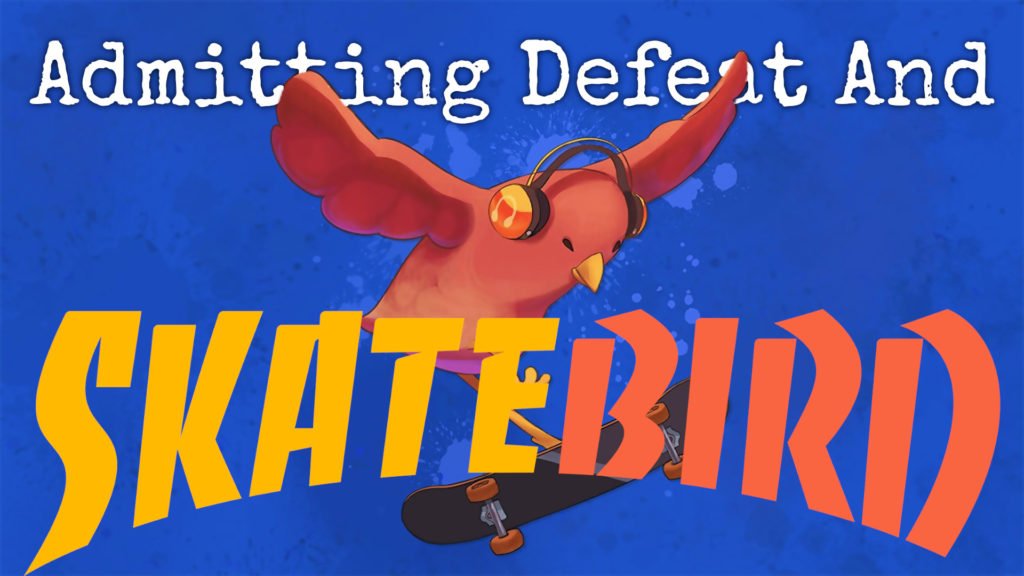
Agent Garbo
Some of you already know how this story goes, what it’s about, and where it ends. I promise you, I’m not going to tell you anything you haven’t heard already. But you should read it anyway, because it’s still a really good story. And then you should keep reading because I have complicated feelings about a story that’s so good happening when it happens and how and how much it sucks that it happened.
For the rest of you, let me tell you about the man who was the greatest Nazi spy of World War 2, as a bit. Let me tell you about Juan Pujol Garcia, Asset Bovril and Agent Garbo.
Content Warning: This article is going to clown on the Nazis a bit and then it’s going to get heavy. Don’t worry, Garcia comes out of it fine, it’s just, you know, Nazis as a subject matter. I mean, not fine fine, he did die in 1988, but like, you know what, just click the ‘more.’
Continue Reading →MTG: Traps
There are, in Magic: The Gathering, an absolutely overwhelming number of subtypes. Subtypes are ways for the game to make meaningful mechanical information on the type line of the card, and, if you’re wondering, by volume, most of those subtypes are creature types. It’s how you get Humans and Wizards and Orggs and Kor and Brushwaggs.
But it’s not just creatures with subtypes; artifacts have them as well, with subtypes like blood and clue for the widely available tokens, but equipment is probably the best known. Enchantments similarly have Auras, as their most common subtype representative, but they also have things like Backgrounds, Shards, Sagas and Curses. Lands, well, the subtypes of lands are widely known, what with Plains, Island, Swamp, Mountain and Forest.
When you look to the instant and sorcery, subtypes are much less common. There’s Arcane, the Kamigawa era mistake, Adventures, which are from the mistake Eldraine, Lessons from Strixhaven about which I have no hot takes, and finally, the subtype Trap.
Traps are a little orphan subtyle from Zendikar and Worldwake, and that’s it. There are twenty trap cards, distributed almost evenly across the colours, and the mechanic is, to say the least, unsupported. There are two cards that relate to traps, one that tutors one up and one that makes your opponent discard them, and they’re both blue, which seems a foolish thing to me, but whatever.
If you’re not able to intuitively glean it looking at it, traps are a card that do something, and have an alternate, reduced cost, based on your opponent doing something that makes the trap even more effective. One of them, Mindbreak Trap is a legacy sideboard card because it can protect you from storm decks going off on turn one, and storm players will often delay an explosive turn to check for it (or any of a number of other possible explosive solutions). Beyond that they’re a category of card you’re most likely to see as someone’s pet.
Trap is almost what I’d consider a dead subtype; there are only so many applications of the flavour, and the mechanic, while nice, eats a lot of space on the card. Plus, the more complicated the trigger, the less room you have for the effect on the card. They want to be responsive, as well — it’s not like Guerrilla Tactics where the card is a basic burn spell that can also punish an opponent doing something to try and stop you.
Still, there’s a lot of room for flavourful play around the whole question of them: there could be creatures that react to traps, or that can be sacrificed to counter traps. There could be trap cards that recur themselves when their conditions are met, and there could be trap cards with an entirely different structure, and all that needs to link them together is ‘being a trap.’ Consider a Foretell card with rules text like ‘Foretell 4RR. This costs 4R less if an opponent gained life this turn.’ It’s still sitting out there, you did foresee the problem, but the spell itself doesn’t necessarily need to consume a ton of space on its alternate cost because a lot of that rules text is shuffled under Foretell. Then, the only thing that you need to do to make the card work with the other trap cards is to have the subtype.
3.5: Use Magic Device
The most comically, hilariously, overpowered skill in 3.5 D&D was a skill that very few classes got, could only be used trained, couldn’t be used reliably and had a drawback if you ever rolled a natural 1. It was also something that wizards didn’t tend to care about having, clerics could almost never take advantage of, and if you had access to it, would take over your build because of what it let you do.
It had a stupid name too.
It was Use Magic Device.
Continue Reading →Story Pile: Chuck
Back in 2007, a confluence of events collapsed together as a lot of people who would move on to Other Things or who had Just Done A Big Thing all got involved in doing a project together for five years that managed to produce one of the tentposts of what we can now nostalgically look back on as ‘pretty good TV.’ I’m not trying to damn with faint praise here, but with shows like Psych and Fringe which I’ve partaken of this year I have come to have an appreciation for that particular era of TV when basically, Leverage was available through whatever method actual Americans watch actual TV.
Look, I haven’t had a functioning TV since like, 2004, let’s just talk about Chuck.

The Great Disappointment
Been thinking about Qanon a lot lately.
Hey have you ever heard of William Miller? He was this really weird dude from the 1700s, a land-owning preacher who started out as a Baptist, then read some books and became a Deist, then got scared about the fact he would die and became a Baptist again, a trajectory that’s kinda familiar to me. Anyway, he got really scared about the fact he was going to die, and then that meant he wouldn’t be alive, and that got him back into being a Baptist and from there, an obssessive reading of the Bible resulted in him getting all het up about Biblical numerology, the sudoku cousin of normal Biblical prophecy’s cryptic crossword.
Content Warning: Me, talking shit about Christian faiths!
Continue Reading →The Jesus Conspiracy
Been thinking about Qanon a lot lately.
Whee, let’s talk about Jesus Mythicism without trying to invoke the handful of prominent mythicist scholars who are probably great big shitheads who I don’t want to associate with!
Content warning: Atheist talking about Jesus!
Continue Reading →Game Pile: Kiitos
Kiitos’ rules are so simple explaining them doesn’t really give you a feel for the game as it plays. The simplest explainer is that it’s a trick taker version of scrabble. You have a hand full of cards with some letters on them. You put down a card with a letter on it, then you say a word that starts with that letter, and then pass it to the next player. If they have the next letter in their hand, they have to play it into the word. In so doing, everyone builds on this word until it’s done, and when that happens, the person who set the word originally says ‘kiitos,’ meaning ‘thank you,’ and then takes the cards and they won that round.
If you can’t continue the existing word, the default assumption is you then take the existing letters in front of you, and put them in front of you face down as your negative points – a ‘great job, loser’ pile of cards that indicate you’ve just hecked up in the worst kind of way, great job. Is there some way to escape this fate, though?
Why, yes — if you can’t continue the word with the cards in your hand, you might be able to add a letter and say a new word. And now suddenly someone may have started with the word BURP and you’ve elbow-shoved the table into BUDGET and what’s more, now they’re bound by the same rules – they have to continue the word if they can. They can’t just shove the word back when they get the chance because the word’s been deformed by definition.
And… that’s it! You play rounds until you stop. The game is incredibly simple, and yet brain-expandingly difficult when you understand the rules system.

This Is A Magic Twenty-Seven
I personally favour magic tricks that minimise gimmicks and sleight of hand. That’s not to say I never do a double lift, but those things often rely on exploiting people who are paying attention and need to be done in a particular pace. You know who are great at getting distracted? Kids.
The magic tricks I tend to use (and the one I’ve used the most) are almost all just math puzzles in disguise. One of my favourite tricks I’ve already made a shirt about, but there are a bunch of other ones that look like you’re containing a fantastically complicated amount of information, or somehow demonstrating a physical mastery of an unnatural skill when really, well, it’s just a trick.
When I wrote about Ricky Jay and the centre deal, I said that it kind of stood to reason that whether or not what he did was ‘really’ a centre deal was inherently ambiguous. After all, merely looking like a centre deal in a perfectly convincing way is a meaningless distinction at that point and only important to the top tier magicians who know what techniques can and can’t be translated into one another. Richard Turner can probably do a proper centre deal but, to put it lightly, Richard Turner’s methods are really not as transferrable as his ‘hard work really works’ policy suggests.
The result is that a lot of really good magic tricks are byproducts of nerdy math stuff:
This trick comes from Martin Gardener, seeming patron saint of the pocket protector’d sort, and I really should get some of his books some day. But this is not the trick of Parker’s I’m most interested in showing off. This is just the first one I learned and have very little practice doing. It’s a great trick because you don’t even need to be good at shuffling. You just hand the deck to someone, get them to set up the 27 cards they want, and shuffle them up then you execute the trick and look like a wizard.
What I do want to bring attention to, though, is this work by Parker, a much more recent trick which is kind of a methodological holy grail. Any card, any place is – well, it’s card control in the purest sense; in order to do it, you need to be able to find any card, and then you need to position it however you want.
Again, Richard Turner can do this and all it takes is an eidetic memory and skin so sensitive he can feel hair move on your arm from across the bloody room. But in this case, Parker is doing this where the only real mechanical skill required is perfect faro shuffles. Now, let’s not kid ourselves, faro shuffles are not ‘easy.’ Part of the strength of the riffle shuffle is it’s really easy for random noise to get involved, and the faro shuffle looks like the riffle shuffle if you can do it quickly and consistently.
But the rest of what you’re doing? It’s all math baybee, it’s just a method that honestly looks fantastically clean. You ask someone ‘hey, what card you want in what position?’ they give you an answer, you shuffle the deck like six times and then show them the card in that position.
I find this kind of effect positively beautiful just because of how clean it is. You can do it as your intro too, where you lead with opening a fresh deck, do this while it’s in a clean state, and then chain into other tricks, where now your deck can be shuffled up and treated weird and your audience has seen the deck get out of the shrink wrap.
Math is cool and doing cool math is cool.
Velikovsky
There is a concern in the sciences of the idea of demarcation. The demarcation problem is the question of how do we tell the difference between science and non-science. This can represent a challenge when dealing with propositions that struggle with replicability or extremely complex systems – think like psychology versus physiology, or even whether there’s a scientific methodology that can be applicable to fields of art, literature, and religion.
The whole fundamental question of demarcation kind of lives in the space of where you can say science doesn’t apply here. The general idea for a time there was that you can’t use scientific methods to grapple with questions of religious belief, a position that was forwarded by Stephen Jay Gould with his framework of non overlapping magisteria. Notionally, science looks at facts while religion looks at values and therefore, these two things should not be seen as competing with one another, and should not be seen as threats to one another.
A problem immediately arises, then, when religion seeks to make fact claims; such is the problem with Young Earth Creationism or fundamentalist Christianity which uses fact claims to justify rules they demand people outside their faith. This can apply on big, important, political ideas like who gets to guide the country and by what rules, and therefore is of specific interest to me; another area it’s important is when you consider who does or doesn’t get to have a voice in a community of ideas.
Demarcation can be seen ultimately as a question of who gets to speak and where.
What if someone had an idea outside your field that made a whole bunch of complicated questions work…
… but nobody in that field would ever listen to their ideas?
Let’s talk about Immanuel Velikovsky.
Continue Reading →4e: The Yakuza Theme
There’s a chance if you played 4th edition, you never even knew Themes were a thing. They were introduced in a campaign sourcebook as a way to flesh out characters under level 10, to give more of that kind of granularity you might want if you say, belonged to a particular organisation, or had something that just made you a bit different to every other character in your class. Themes are great because what they often give you serves really well in offering a bit of a mechanical variety to builds without necessarily making things worryingly more powerful. The idea is very sound.

The execution on the other hand, phew, the execution, well, let me tell you.
I have talked in the past about how themes are a problem because there are only a few of them that are as strong as one another; this creates a smaller pool of possible options. Melee combatants usually take the Guardian, which gives you a way to get a free extra basic attack and a bunch of other powers you’d never bother taking. If you follow my How To Be series you might have seen the commonality with which I bring up the Werebear and Werewolf as ways to open up a build’s options. Also, almost all builds that have no better reason to be anything else are going to benefit from the Fey Beast Tamer.
These themes are good because they give you something robust, consistent, and reliable in all situations. The greatest failing of themes are when they break these rules, and when they do it, it is often in service of 4th edition’s worst habit, which I’ll just shorthand as fiddly bookkeeping bullshit. As an example, let’s check out the Yakuza theme.
Continue Reading →Story Pile: Fringe
Well, this is a chonksome spoiler warning.
If I’m going to talk to you about what I found interesting about Fringe, I’m going to need to talk to you about each season of Fringe, and it’s an interesting series in that each season introduces a new status quo, and then usually changes that status quo midway through the season. A good way to think of it is that the five seasons of Fringe are one show trying out five different genres as ways to tell a story, in a broad way.
If you want an opinion of Fringe without the spoilers, though, I’d say that it’s pretty good. It says a lot about how TV series with interesting ideas work in that I am finding myself best able to describe it as ‘It never angered me,’ as if that’s a mark of high quality and esteem while not making it sound like it’s some sort of masterpiece. The episodes have to be watched in order (and one was screened out of order), the creator’s vision is reasonably interesting, and each season changes things so that if you dislike one season you know a change is coming.
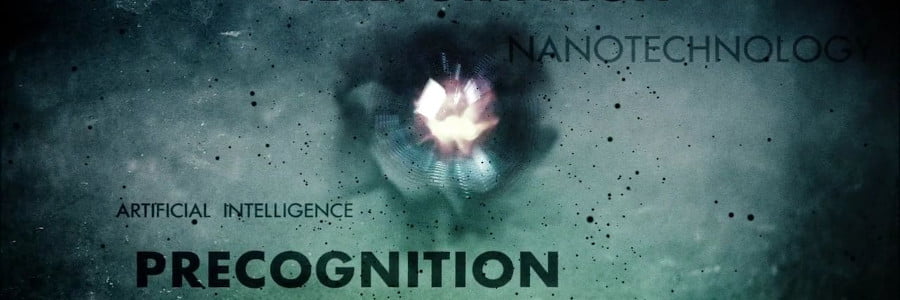
It’s really good sci fi if what you’re looking for is decent sci fi, rather than pop-the-top-off-your-head-expand-your-brain-weirdness sci fi. If you’ve read even one decently sized science fiction short story collection, you’ve read the kind of stories you’ll get here, interspersed with a different ‘big idea’ world thing going on, along with some reasonably interesting, fun characters.
Okay? Like, that’s the recommendation. Fringe never made me deeply exasperated with it being stupid.
An added content warning: This is a series with a lot of body horror. Most episodes open with a 5 minute short story about something graphically awful happening to a human through the metaphor of a human body. Drugs are a constant presence, with Walter regularly offhandedly mentioning being stoned out of his gourd, too.
Continue Reading →The Most Important Book On semiotics In The 20th Century Starts With Wrestling
Hey, have you ever heard the phrase the death of the author? You might have, and if you don’t work at TechRaptr, you might even know what it means. That is, it’s the idea that the author does not hold any unique authority over how the story is interpreted. Wow, that was super easy to explain, why do people get weird about it, well, because people will get weird about it, and I am simplifying it for very comical effect. Well, it was an idea written by Roland Barthes, pronounced Bartz, like the protagonist of Final Fantasy V, I know, good joke, we all know the protagonist of that game is Faris.
Ten years before The Death of the Author, Barthes compiled and released Mythologies, a book in which he describes at length the way that meaning is made out of repeated use of symbols. This is done by a set of examinations of things about which we have myths — probably the most well-known is the example of how red wine is seen during winter as warming, and summer as cooling, despite being the same wine served in the same condition. The myth of the wine is not the wine’s material conditions, but what the wine is.
This book is dense and complex and, saying it as someone who is reading the English translation of the French with sixty-five years of distance between us that has been influenced by Barthes’ ideas, it’s honestly a real struggle to properly ‘handle’ the ideas in it. Like, even within his space, Barthes was a writer fond of fantastically dense text, where single sentences often used cross-referenced phrases or terms that needed entire essays of their own to unpack. The result is that even when I try to explain the text I can be easily distracted by the question ‘am I explaining Barthes’ idea, or using Barthes to explain my own idea?‘ which is impressive when dealing with works of art, but remarkably annoying when dealing with academic text.
Typically, Mythologies comes up in the conversation about what does and doesn’t count as a text. This is foundational to textual analysis at university, because you need to understand that [a text] is a self-defined parameter, where you get to say ‘the text is this thing I’m currently pointing to.’ But the examples he gives in the essays include, yes, red wine, but also soap commercials, and first of all, he opens with professional wrestling.
And you may think ‘hang on, not really professional wrestling, they must have meant something different in 1957’ and I must assure you: No. No he did not. In the essay he makes it very clear it is about pre-arranged wrestling with a narrative that cares about communicating what is happening in the ring in its own reality, not any kind of proper wrestling ‘sport.’ Indeed, he rejects the idea that it’s a sport (which I don’t quite agree with, but whatever), and that it is instead a spectacle.
It is not the realities of wrestling that matters.
What wrestling is is what matters.
I entertained the idea of doing a rewrite of this fantastically dense essay to update the examples to modern actors and agents, but it’s simply too hard. The essay is four pages long and just my notes on it are four times that. It’s so deliberately tight that to explaine Barthes runs the risk of explaining more about myself. What’s shocking is the ways in which he draws attention to some ideas that still are true about professoinal wrestling, including specifically the way wrestling is lit.
It used to be that wrestling would, just as a matter of practicality for the storytelling in the 50s, be extremely bright, and lit from the top down. This meant that anyone at any angle around the ring could see the action clearly, and nobody would be in anyone else’s shadow, and also, as a side effect, everyone gets kind of ‘brightened’ and ‘lit up.’ Contrast becomes moreso. These days, that same ‘light from all sides’ and deliberate construction of light is really important still: You don’t want lots of dancing lights around the stage (unless you do), so shadows are all obliterated with carefully balanced lights.
The result is a spectacle of a myth transpiring in the brightest of lights; in which you do not need to know the story to know the story; where you watch two people become, for a time, sun gods bathing in their own radiant light.
CoX: Robyn Hoodie
This is an explanatory writeup of one of my Original Characters (OCs). Nothing here is necessarily related to a meaningful fiction you should recognise and is shared because I think my OCs are cool and it’s cool to talk about OCs you make.
“Fun things to do on a date? Crimes.”
The Etoile’s society is fundamentally a sequence of parasites; very small groups of people produce useful work, and other people steal it. In the process, that theft sheds value onto other people, the traders and thieves and fences and snitches that lead to Superscience Flange Coil getting from point A to point B.
There aren’t a lot of public work projects, especially when all the money is moving valuable super science stuff to the University in Cap Au. That’s what got Robyn started – robbing from the rich and scattering their ill-gotten gains in the street. It’s simpler: No need for a fence when a thousand people are holding the stolen goods.
Where did she get those wonderful toys? Well, she stole them.
Continue Reading →Game Pile: Superstition
I checked out the solo journaling card game Superstition this month, and then I put those thoughts in a video while I talked about the idea of semiotics and audience.
Thumbnail after the fold!
Continue Reading →Wanna Know How To Hide Something?
Put it in a book.
It’s an old joke on university campuses that if you want to hide something, put it in a book. It’s a little bit despairing, as these memes go; the idea that we’re all filling books with words but we also know mathematically, most of them go unread. There’s an institutional value to distributing them and making sure they’re available everywhere for everyone, but we also know that one of the parts of contributing to the vast project of literally all human knowledge means that any given phrase you write is a drop in an ocean of your own work that is itself a drop in the ocean of your cohort and then that’s a drop in the ocean of even what, your generation.
The scale is dizzying.
There’s a related joke, where if you do a thesis, you should stick a $20 in it, and that way you’ll get to know if anyone looked inside it when you check in on it. I actually tried this – a $5 in my Honours Thesis, which I found at the library.
Anyway, turns out it’s not there at the library any more and I don’t know where they keep it. It’s just an Honours thesis, it’s not super important, I assume they’re kept in some part of the library with particular rules. Just funny to me to think about how even a stunt to make me check in on it regularly didn’t work. To be fair, a global pandemic interfered with my regular check-ins. I could put anything on this blog and if the context around it was wide enough, it could go unnoticed.
Makes me wonder what I DID put in this blog when I was less conscientious that’s just laying around like me confessing to some terrible deed or association. Or what someone could take out of context, like some phrase from a videogame review about how I like shooting at kids or something.
Could put any old bollocks here, really.
I’m pretty sure fish are too dumb to have feelings.
Remembering Ed Brayton
Two years ago, today, Ed Brayton told us he was about to die.
Content Warning: Death, Fundie Stuff
Continue Reading →The Sodafunk Swindle
Hey, you wanna talk about some year old dumb-as-hell vtuber drama that nonetheless ties into toxic conversations about monetisation, ownership of labour, body shaming, gender transition and capitalism?
No?
Oh okay, that’s reasonable, feel free to move on.
Continue Reading →Story Pile: True Story
Okay so here’s a real thing that happened.

Content warning: Domestic Violence and Intimate Partner Murder, Slavery
Spoiler Warning: Spoilers for the movie and the real events around the movie
Continue Reading →The Man From Taured
Have you heard this story?
If you have, chances are you’ve heard about it from a channel that does spooky real stories or wants to talk about the things the man doesn’t want you to know about or there are bugs in my teeth no not microphones, actual little bugs with so many wiggly legs. It’s one of a small corpus of ‘true scary stories’ that get covered in the venn diagram of ‘creepy things that exist’ like La Isla de las Muñecas, or the Winchester house, or ‘interesting crime with an open ended question’ like the hijacking by DB Cooper and the disappearance of Jimmy Hoffa.
If you haven’t –
Well, wait, let me set the tone properly. Turn off the lights and put on some spooky music from the Kevin Macleod archives.
Continue Reading →Legal Systems in Cobrin’Seil
Let’s talk about the complicated way people in a D&D setting find justice.
Understand that a body of this thinking is a byproduct of watching this Burgerkreig video. I’m summarising some points and his overall structure, and I’m trying very hard to not just copy his metaphors and jokes. This kicked me into realising that I had, in fact, actually done this for part of my setting, which meant I had something useful, a default.
Having the Eresh Protectorate as a central setting component is very handy, because they help to standardise things across the entire vast continent of Bidestra. Not that they impose a singular standard per se, but because when there’s one cultural marker spread across a region, other cultures can point to it and say ‘we do it that way’ or ‘we don’t do it that way.’

What I like about it in this case specifically is that when we look at the legal system of the Eresh Protectorates, it is ridiculous and full of uneven, inadequately distributed systems for stupid reasons. But those reasons are all to some extent realistic and create points of tension for when I run the game, and give players a meaningful relationship to the systems in the world.
Continue Reading →Game Pile: Stunts
This game is complicated to discuss. Not because the game is complex or there’s some problem with the provenance or a complicated word in the title, but rather, because most people I know who knew the game knew it only as stunts.exe, but depending on what part of the world your copy came from, it could have been known as 4DS, Stunt Car Racer, Stunt Driver, or Stunts.
We were, however, all well aware that this game was great.
For reasons that are tricky to explain.
Continue Reading →Asset Brainstorm #8 — Tricked Out
As a matter of practice, it’s important to me that I keep demonstrating different ways to engage with games. Making games is a practice, and when you can look at game assets and consider ways to apply them, you’ll begin to see how much of game design is stuff you can do. Therefore, on this blog I’m making it a project to regularly grab some game assets I couldn’t make myself, that are made for game designers to work with, and see what ideas they inspire.
A different approach this month. See, it’s Tricks month, and I realised last year that hey, it’s weird that I don’t really do much with trick taking considering the month. Plus, 2021 was the year I was reminded of a youthful fantasy about the idea of being a hot cool skateboarder boy, for some reason, even if I never had any means or plan on acting on it, and when I saw a skateboarding game being previewed on AwShux, I was seized with the realisation that it should be a trick-taking game.
And it wasn’t.
And that’s dumb.

I’ve had the note on my list to try and make a skateboarding-themed trick-taker game at some point, and here in tricks month that’s what I’m going to try and do.
Continue Reading →MTG: July 2022’s Custom Cards
Hey, you do know I post these cards to both Reddit and Twitter, right? I just realised that you may not be aware that this is a daily thing, with room for discussion on every card.
uh anyway, July’s custom cards!
Warning: Wizards employees, this post contains primarily custom magic cards.
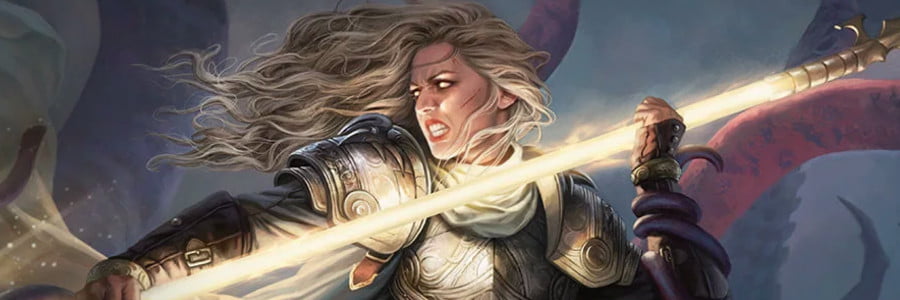
Tricks Month 2022!
The consensus reality is created by perception. Not that the reality of material objects is influenced by what you perceive, but humans do not act on reality of material objects, they act on their perceptions of the reality of material objects.
August is here, and with it brings our month’s theme. The theme is tricks, which I use to broadly refer to stage magic, con artistry, and in general, the way people are deceived.
This year more than most, I have been sitting seeing the theme of ‘tricks month,’ a time when I talk about goofy things brains do, lies, cons, scams and flimflam, and ‘dread month,’ a month where I feel free to talk about grim, fatalist, dreadful and terrible subjects, and those two things have been very rapidly growing their middle space in the venn diagram recently. Like early 2021, I wrote an article about the Human Mars Base That Definitely Exists Dude Just Trust Me thinking I had to explain what Qanon was in it, and oh lordy I did not expect things to get dumber.
I’ve got my subjects lined up this month and what I’m going to try and do is tell stories. Last year, I wrote about Henryk Orenstein which is still an absolute favourite bit of writing. But also I liked talking about Jasper Maskelyne, which way less popular as a post goes.
Don’t worry, though, my desire to keep things perky will keep the topics light. I hope. I’m going to tell you the story of one of my favourite conspiracy theories where the explanation is legit more interesting than the myth, about the murder mystery of the author, and one of the greatest liars of World War 2.
Story Pile: Psych
I almost did this as a Sherlock Holmes thing earlier in the year.
Psych is a TV series that is still? Kind of? Technically? Ongoing? It started in 2006, and in the first episode, Shawn is excited to maybe get his hand on some free CD Wallets, while in the most recent 2021 movie (This Is Gus), they suggest someone change her name from ‘Karen,’ because of the meme. It follows Shawn, a modern day Sherlock Holmes who has tuned the ‘easily bored smug dickhead’ dials all the way up, and sets him and his best friend Gus, a longsuffering niche pharmaceutical sales representative and probably iconic blerd?, in a new shared task of running a detective agency, which solves…? Crimes?
Oh and the gimmick is they pretend Shawn is a psychic.

Because that gives them a legitimacy that they don’t have by default.
You know, like real psychics.
Low key, this is the thing that I found the most interesting about the pitch of this series; it’s about how cops are so bad at being cops that they will turn to outside sources to help them solve things, and those things are nonsense. And the nature of power, and the way power is concentrated in our society, is such that The Police, a serious institution with the Serious Job of Seriously Engaging with Serious Crimes, have means to accept the help of psychics before they have means to accept the input of ordinary people who are just good at the things police think they shouldn’t be good at.
The whole series starts with that premise: Police are bad at their job, and when they encounter someone good at their job, they assume that must be for illegitimate reasons.
